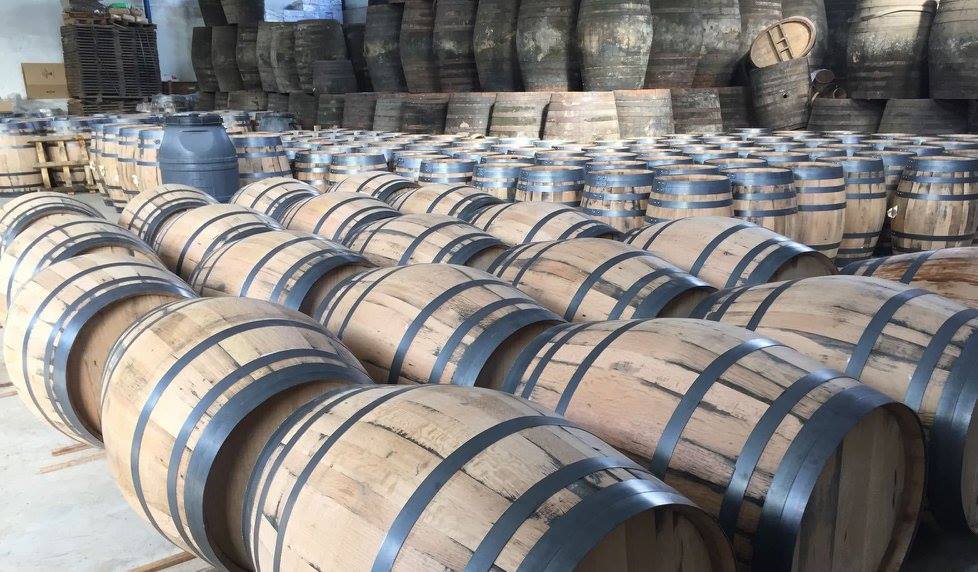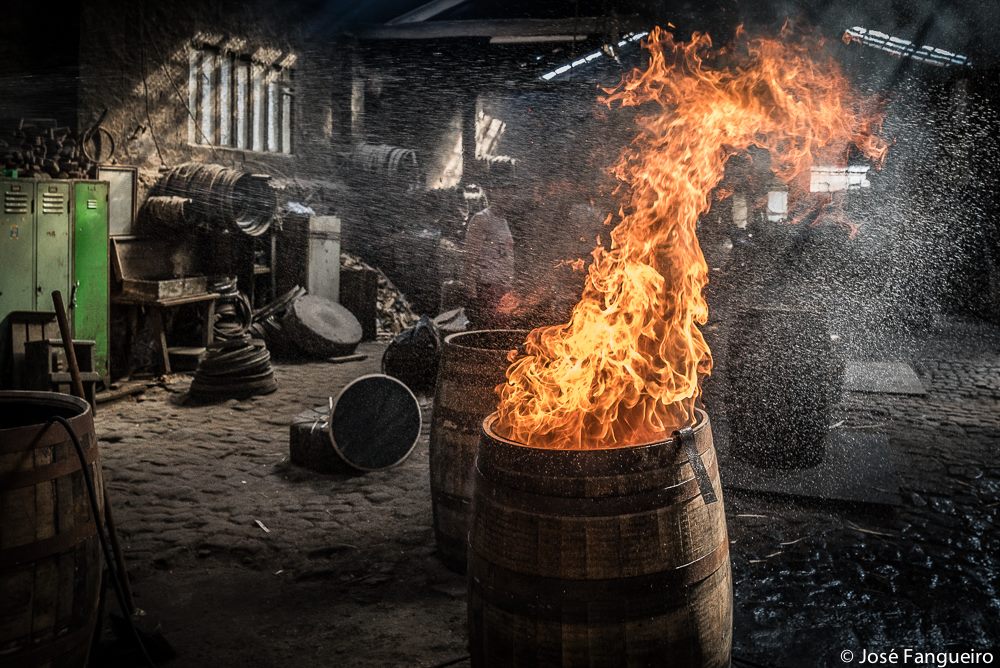Making a wooden barrel is a skilled craft – taking planks of wood and bending them to make a watertight vessel is something that takes many years to perfect. At our cooperage in northern Portugal (and indeed all over the world) it is always a struggle to find sufficiently skilled craftsman and training up an apprentice takes several years – with our business growing we have had to invest a great deal of time in training new staff and given that it is physically demanding work it is not always easy to find apprentices willing to learn. When we do find a new apprentice who wants to learn the art of cooperage, this is more or less the first lesson they have!
First of all the parts of a wooden barrel:
- Hoops: Metal rings which surround the barrel.
- Head: The two ends of a barrel.
- Bilge: The widest part of a barrel.
- Stave: A wooden strip that is used to make up a barrel.
- Bung Hole: The opening to a barrel.
The first stage is the preparation and selection of the staves. Not all the staves are exactly the same size and they have to be put in an order to give the best possible fit to make the barrel. At this point the staves are not yet bent although they are cut to flare in the middle.
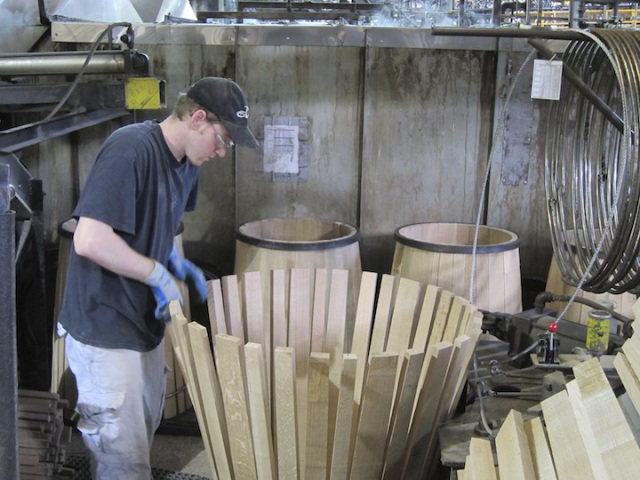
Next the barrels are heated up by placing the partially made barrels over a small fire to heat them from the inside (using off-cuts of wood to fuel the fire). Making sure that the wood heats up sufficiently so that it will bend but not so much that it will be damaged is something a cooper will only learn through experience, as this can only be done by ‘feel’. Temporary hoops are then put round the barrel to hold the staves in place.
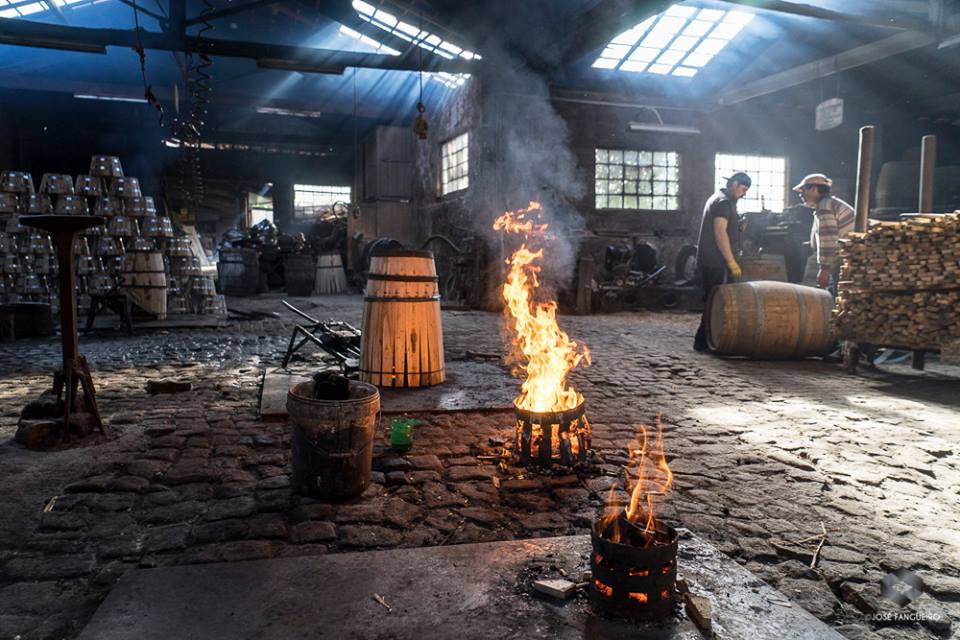
When barrels are going to be used for producing wine, whisky or port wine they are toasted again with a fire inside the barrel. This helps the wood to give up flavours to whatever the drink is that will be aged inside it – toasting can be done for shorter or longer periods depending on exactly how the barrel is going to be used. Decorative wooden barrels to not have to be toasted of course.
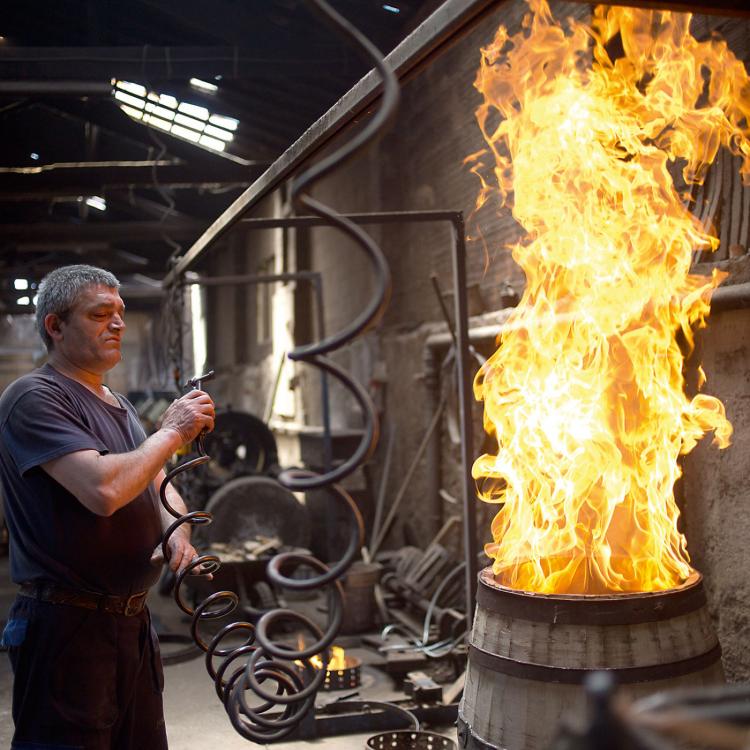
The permanent hoops can now be put in place of the temporary ones that were added earlier and the surface of the barrel is sanded to give a smooth finish. Where applicable a head brand is used to add a logo or name and the barrel is ready for shipping.
If you are interested in visiting our cooperage in Portugal (we are based not far from events in Porto), please contact us for more information as we do offer guided tours for groups depending on availability, but we always require booking in advance.

